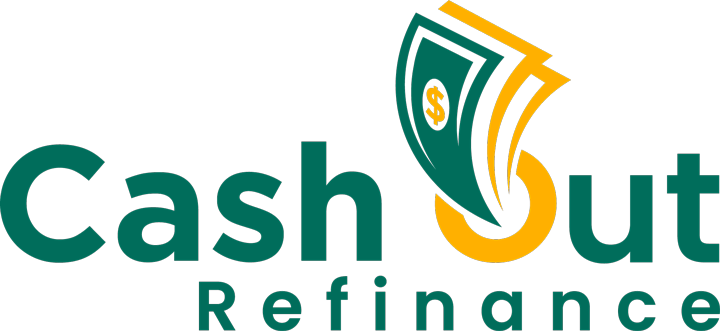Cash-Out Refinance Examples: How Homeowners Leverage Their Equity
A cash-out refinance is a great financial tool for homeowners looking to tap into their home’s equity. By refinancing their mortgage for a higher amount than what they owe, they can access the difference in cash for various needs. Below, we explore real-world cash-out refinance examples and how they benefit homeowners in different financial situations.
What is a Cash-Out Refinance?
A cash-out refinance replaces an existing mortgage with a new one for more than the remaining balance, giving the borrower access to the difference in cash. Homeowners use cash-out refinancing for home renovations, debt consolidation, education expenses, investments, or other financial needs.
Example 1: Home Renovation and Upgrades
Scenario:
- Current Mortgage Balance: $150,000
- Home Value: $300,000
- New Loan Amount: $240,000 (80% LTV)
- Cash Received: $90,000 (after closing costs)
How the Homeowner Benefits:
- Used the funds to renovate the kitchen and bathrooms, increasing home value.
- Upgraded to energy-efficient windows and insulation, reducing utility costs.
- Increased curb appeal and made the home more attractive to future buyers.
Example 2: Debt Consolidation
Scenario:
- Current Mortgage Balance: $200,000
- Home Value: $400,000
- New Loan Amount: $280,000 (70% LTV)
- Cash Received: $80,000
How the Homeowner Benefits:
- Paid off $50,000 in high-interest credit card debt (previously at 18% APR).
- Cleared $30,000 in student loans (previously at 6% APR).
- Lowered monthly payments by rolling high-interest debt into a lower-rate mortgage.
- Increased monthly savings by reducing overall interest costs.
Example 3: Funding a Child’s College Education
Scenario:
- Current Mortgage Balance: $120,000
- Home Value: $350,000
- New Loan Amount: $250,000 (70% LTV)
- Cash Received: $130,000
How the Homeowner Benefits:
- Funded four years of college tuition without taking out high-interest student loans.
- Avoided relying on private education loans with higher interest rates.
- Retained homeownership stability while investing in the future of their child.
Example 4: Real Estate Investment
Scenario:
- Current Mortgage Balance: $180,000
- Home Value: $500,000
- New Loan Amount: $350,000 (70% LTV)
- Cash Received: $170,000
How the Homeowner Benefits:
- Used the cash to purchase an investment property generating rental income.
- Diversified assets by owning multiple properties.
- Benefited from property appreciation and passive income.
Example 5: Emergency Fund and Financial Security
Scenario:
- Current Mortgage Balance: $100,000
- Home Value: $300,000
- New Loan Amount: $240,000 (80% LTV)
- Cash Received: $140,000
How the Homeowner Benefits:
- Built a financial safety net for medical emergencies.
- Had peace of mind with accessible funds for unexpected expenses.
- Avoided reliance on high-interest personal loans.
Example 6: Starting a Small Business
Scenario:
- Current Mortgage Balance: $220,000
- Home Value: $500,000
- New Loan Amount: $375,000 (75% LTV)
- Cash Received: $155,000
How the Homeowner Benefits:
- Used funds for business startup costs (equipment, marketing, rental space).
- Avoided taking out a business loan with higher interest rates.
- Created an independent source of income.
Example 7: Paying Off an Existing HELOC
Scenario:
- Current Mortgage Balance: $200,000
- Home Value: $400,000
- New Loan Amount: $300,000 (75% LTV)
- Cash Received: $100,000
How the Homeowner Benefits:
- Consolidated an existing home equity line of credit (HELOC) with a high variable interest rate.
- Secured a fixed mortgage rate to stabilize monthly payments.
- Avoided potential payment increases due to interest rate fluctuations.
Example 8: Retiring Comfortably
Scenario:
- Current Mortgage Balance: $130,000
- Home Value: $400,000
- New Loan Amount: $280,000 (70% LTV)
- Cash Received: $150,000
How the Homeowner Benefits:
- Created a financial cushion for retirement expenses.
- Paid off remaining debts to live mortgage-free in retirement.
- Used funds for travel, medical needs, and daily living expenses.
Key Considerations Before Taking a Cash-Out Refinance
Pros:
✅ Lower interest rates compared to personal loans and credit cards. ✅ Provides access to large amounts of cash for various financial needs. ✅ May offer tax benefits if funds are used for home improvements (consult a tax professional).
Cons:
❌ Increases mortgage debt and may lengthen loan repayment time. ❌ Closing costs typically range from 2%-6% of the loan amount. ❌ Higher loan amounts can result in larger monthly payments. ❌ Risk of foreclosure if new mortgage payments become unaffordable.
Final Thoughts
A cash-out refinance can be a powerful financial tool when used wisely. Whether for home improvements, debt consolidation, real estate investment, education, or starting a business, it provides homeowners with the opportunity to leverage their home equity for financial growth.
Before proceeding with a cash-out refinance, compare lenders, analyze loan terms, and assess how it aligns with your financial goals. By making an informed decision, homeowners can maximize the benefits while minimizing the risks associated with refinancing.
If you’re considering a cash-out refinance, consult with a mortgage expert to explore your options and determine the best approach for your financial situation.


